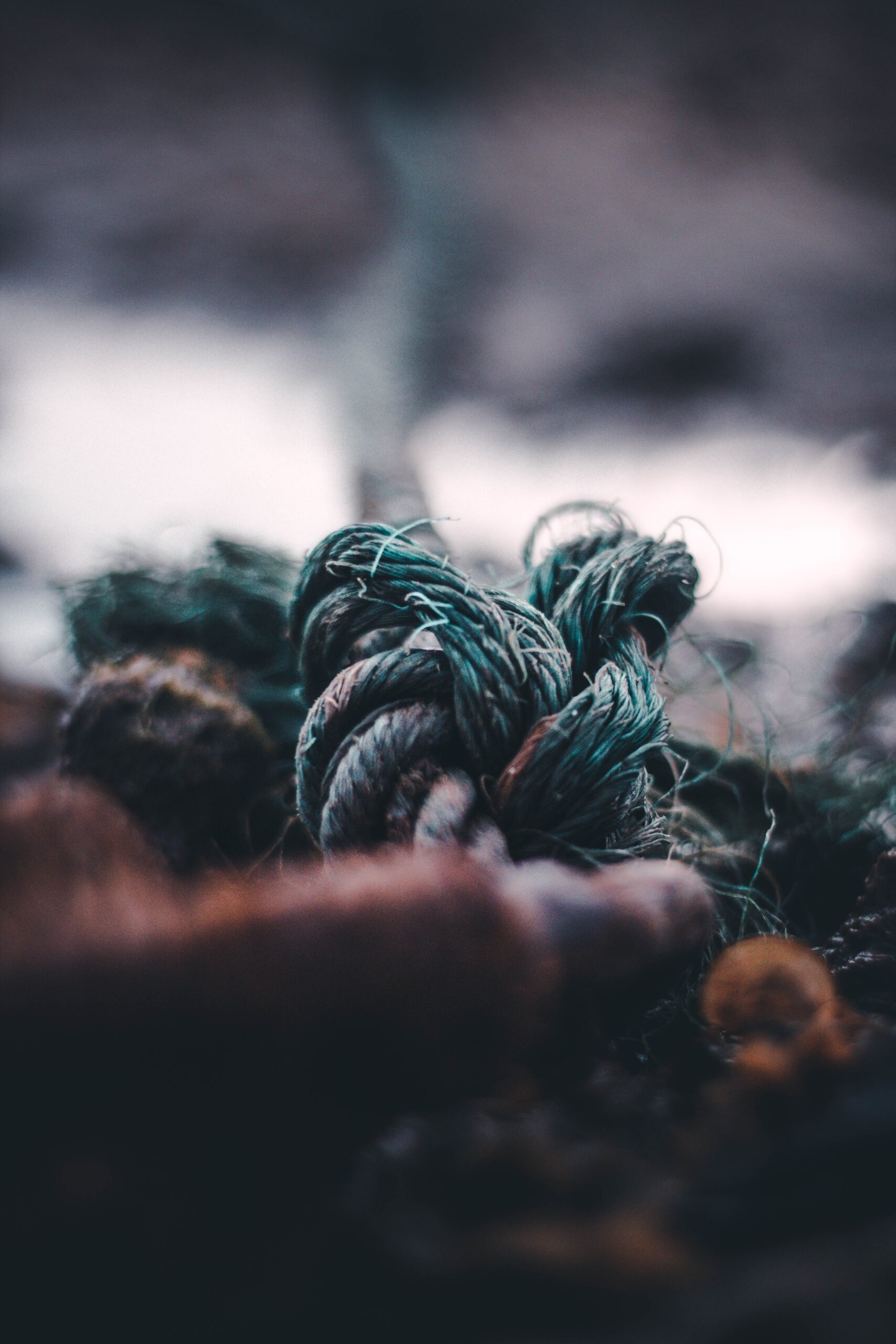
Choosing the right diameter for your climbing rope is crucial for ensuring a safe and successful climbing experience. With so many options available, it can be overwhelming to know which one is best for you. The diameter of your rope plays a significant role in its strength, durability, and overall performance. Whether you’re a beginner or an experienced climber, understanding the factors to consider when selecting the diameter of your climbing rope is essential. By taking into account your climbing goals, ability level, and the type of climbing you’ll be doing, you can confidently choose the right diameter that will enhance your climbing adventures.

Factors to Consider
When it comes to choosing the right climbing rope, there are several important factors that you need to consider. The type of climbing you plan on doing, the strength of the rope, its weight, durability, handling characteristics, safety features, and price are all key factors that should influence your decision. By taking these factors into account, you can ensure that you select a rope that is suitable for your climbing needs.
Common Rope Diameters
Climbing ropes come in a variety of diameters, and each diameter has its own unique characteristics. Here are some of the most common rope diameters you’ll come across:
9mm
A 9mm diameter rope is considered to be on the thinner side. This makes it lightweight and ideal for sport climbing or other activities where weight is a concern. Thinner ropes also tend to be more supple and easier to handle, making them a popular choice among climbers who value agility and flexibility.
9.4mm
The 9.4mm diameter is another popular choice for climbers. It strikes a balance between weight and durability, making it suitable for a wide range of climbing disciplines. This diameter is often used in trad and multi-pitch climbing, where a combination of strength and maneuverability is desired.
9.8mm
The 9.8mm diameter is a versatile option that is suitable for various climbing activities. It offers a good balance between weight and durability, making it a popular choice among climbers who want a rope that can handle a wide range of challenges.
10.1mm
A 10.1mm diameter rope is on the thicker side. These ropes are designed to withstand heavy use and are often chosen by climbers who engage in big wall climbing or other activities that require maximum durability. Thicker ropes also tend to provide greater abrasion resistance, making them suitable for rough terrain or when climbing near sharp edges.
10.5mm
The 10.5mm diameter is the thickest among the commonly used rope diameters. These ropes are incredibly robust and are typically used in demanding environments such as ice climbing or for climbers who prioritize durability above all else. While they may be heavier and less supple than thinner ropes, 10.5mm ropes offer unmatched strength and long-lasting reliability.
Type of Climbing
The type of climbing you plan to do is an essential factor to consider when selecting a rope. Different climbing disciplines require different characteristics in a rope, so it’s important to choose one that is appropriate for your intended use.
Sport Climbing
Sport climbing typically involves well-protected routes with pre-placed bolts or anchors. For this type of climbing, a durable rope with good handling characteristics, such as a 9.4mm or 9.8mm diameter rope, is often recommended.
Trad and Multi-pitch Climbing
Trad and multi-pitch climbing often require climbers to place their own protection in the form of cams, nuts, or other gear. Because of the additional demands placed on the rope, a thicker rope in the range of 9.8mm to 10.1mm is typically preferred, as it offers greater durability and resistance to abrasion.
Top Rope Climbing
Top rope climbing involves setting up a rope system from an anchor point at the top of a route, providing a secure belay for the climber. For this type of climbing, the rope’s diameter is less critical, and a versatile option like a 9.4mm or 9.8mm diameter rope is often suitable.
Big Wall Climbing
Big wall climbing often requires long ascents with heavy loads and extensive rope management. For these demanding climbs, a thick and durable rope with a diameter of 10.1mm or 10.5mm is typically preferred, as it can withstand the rigors of repeated use and heavy loads.
Ice Climbing
Ice climbing places unique demands on a rope due to the cold and wet conditions. A thicker rope in the range of 9.8mm to 10.5mm is often recommended for its added durability and ability to withstand the harsh environment.
Rope Strength
Understanding the strength of a climbing rope is crucial for your safety and the integrity of your gear. Three main factors determine rope strength: UIAA norms, use duration, and impact force.
UIAA Norms
The Union Internationale des Associations d’Alpinisme (UIAA) sets standards for climbing equipment, including ropes. Look for ropes that meet the UIAA standards, as this ensures that they have undergone rigorous testing and adhere to strict safety criteria.
Use Duration
The lifespan of a climbing rope depends on various factors, including how frequently it is used and the types of climbing it is subjected to. Most manufacturers estimate the average lifespan of a rope to be between 5 to 10 years. However, excessive falls or exposure to harsh conditions can shorten a rope’s lifespan. Regular inspections and retirement of worn-out ropes are essential for maintaining safety.
Impact Force
When a climber falls, the rope absorbs the energy generated by the fall. Impact force measures the maximum force experienced by the rope during a fall. A lower impact force indicates that the rope absorbs more energy, reducing the force exerted on both the climber and the protection. Look for ropes with low impact force ratings to minimize the risk of injury.

Weight
The weight of a climbing rope can significantly impact your climbing experience, particularly on long routes or when carrying a heavy pack.
Thinner Rope
Thinner ropes, such as those with a diameter of 9mm, are lighter and more compact. They are popular among climbers who prioritize speed and agility, as they can reduce the overall weight of their gear. Thinner ropes are particularly well-suited for sport climbing or situations where lightness is crucial.
Thicker Rope
Thicker ropes, with diameters of 10.1mm or 10.5mm, are heavier but offer additional durability and abrasion resistance. These ropes are often chosen by climbers who prioritize durability and reliability above weight savings. Thicker ropes are typically used in disciplines such as big wall climbing or ice climbing, where the demands on the rope are greater.
Durability
The durability of a climbing rope is a crucial consideration, as it directly affects the longevity and safety of your gear.
Number of Falls
The number of falls a rope can withstand before losing its strength is an important factor to consider. Manufacturers often provide information about the number of UIAA fall rating tests a rope can withstand. Higher-rated ropes can sustain more falls, making them more suitable for intensive use, while lower-rated ropes are better suited for less demanding climbs.
Sheath Slippage
Sheath slippage refers to the movement or shifting of the rope’s outer layer (sheath) along its core. Excessive sheath slippage can compromise the rope’s integrity and strength. Look for ropes with a well-designed and tightly-woven sheath to minimize sheath slippage and ensure long-lasting performance.
Cut Resistance
Climbing ropes can encounter sharp edges or abrasive surfaces while in use. Ropes with higher cut resistance are better able to withstand these challenges and maintain their integrity for longer. Thicker ropes generally offer better cut resistance, but it’s important to consider this factor alongside other considerations, such as weight and handling.

Handling
The way a rope handles can greatly impact your climbing experience. Consider these factors when evaluating a rope’s handling characteristics.
Knotability
Some ropes are easier to tie and untie knots in than others. An ideal climbing rope should offer good knotability, allowing secure knots to be tied quickly and easily. This is particularly important for climbers who frequently need to tie and untie knots during their climbs.
Flexibility
Rope flexibility refers to how easily it bends and moves. A rope with good flexibility will handle smoothly when belaying, clipping in, or making quick movements. Consider your personal preference for rope flexibility, as some climbers prefer a stiffer rope for certain types of climbing.
Stiffness
Stiffness can vary between ropes, and it can influence how the rope handles and feeds through belay devices. Some climbers prefer a stiffer rope as it tends to kink and tangle less, making it easier to manage during climbs. Others may prefer a more supple rope for improved handling and maneuverability.
Safety
Safety should always be a top priority when selecting a climbing rope. Consider the following factors to ensure the highest level of safety during your climbs.
Dynamic Elongation
Dynamic elongation measures how much the rope stretches under load during a fall. A rope with higher dynamic elongation will absorb more energy, reducing the force exerted on both the climber and the protection. Choose ropes with lower dynamic elongation ratings for increased safety.
Static Elongation
Static elongation refers to the amount a rope stretches under a steady load, such as when a climber is suspended on the rope. While some stretch is desirable for cushioning falls, excessive static elongation can lead to undesirable rope movement and a less secure belay. Look for ropes with low static elongation ratings to ensure stability during climbs.

Price
Price is a factor that can’t be ignored when choosing a climbing rope. Ropes come in a range of prices, depending on their features, materials, and construction.
Entry-level Ropes
Entry-level ropes are typically more budget-friendly, making them a popular choice for beginners or occasional climbers. These ropes may have slightly fewer features or lower performance ratings but are still suitable for most recreational climbing activities.
Advanced-level Ropes
Advanced-level ropes offer enhanced performance and durability. They often incorporate innovative technologies or materials that improve safety and handling characteristics. These ropes are typically more expensive but can be worth the investment for more experienced climbers or those seeking top-of-the-line performance.
Premium-level Ropes
Premium-level ropes are the pinnacle of climbing rope technology, offering the highest performance, durability, and safety features. These ropes are often targeted at professional climbers or those who demand the best performance from their gear. While they can be quite expensive, premium-level ropes deliver unparalleled performance and longevity.
Conclusion
Choosing the right climbing rope involves considering several key factors. The type of climbing, rope strength, weight, durability, handling characteristics, safety features, and price are all crucial elements to take into account. By understanding the characteristics and requirements of each factor, you can make an informed decision and select a rope that best suits your individual climbing needs. Remember, safety should always be the top priority, so don’t compromise on the quality and reliability of your climbing rope.

